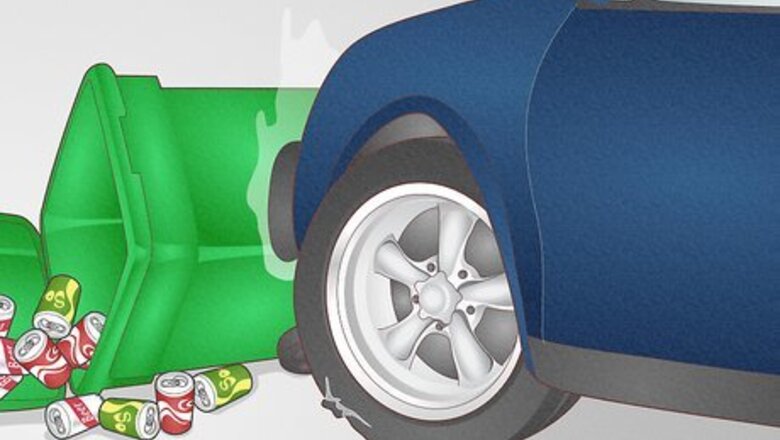
views
- Driving with overinflated tires poses a safety risk to you and others on the road. It can increase the blowout risk and strain your vehicle's fuel efficiency.
- To remove excess air from your tires, remove the valve cap from the stem. Use a screwdriver to press down on the metal pin and release air.
- As you release air, periodically check the tire's PSI levels. Your vehicle's recommended PSI will be on the driver's side door or the owner's manual.
Are overinflated tires dangerous?
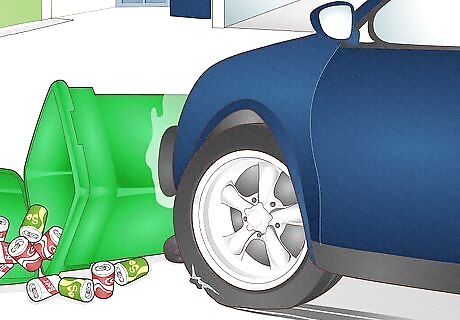
Overinflated tires cause damage and pose a safety risk to you and others. An overinflated tire can negatively impact your vehicle's safety, especially since over inflation increases the risk of blowouts. A tire blowout can cause you to lose control of your vehicle, making it harder to brake within a short distance, and can lead to an accident. Overinflated tires can also negatively impact your vehicle's driver assistance functions, like the anti-lock braking system, putting you at risk. Under inflating your tires is just as dangerous as over inflating them. In this case, more of the tire's surface area touches the road, increasing the friction and heat before a blowout. Insufficient air can also disrupt your vehicle’s safety functions. When your vehicle has less than 25% air, a low-pressure light on your dashboard will appear.
How to Fix Overinflated Tires
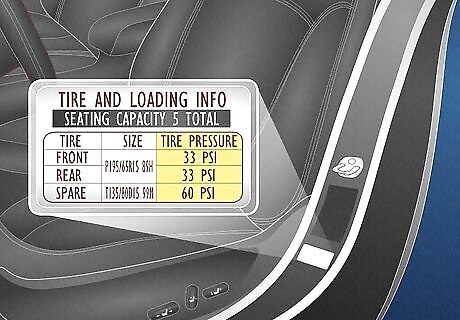
Locate your vehicle's recommended tire pressure. On the inside of the driver's door, look for a sticker that details the front, rear, and spare tire dimensions and PSI. Your vehicle's PSI stands for Pounds per Square Inch and is the recommended amount of air pressure you should put in. An overinflated tire is more than 10% of the recommended PSI. for instance, if your recommended PSI is 35, don’t go above 38 PSI. The recommended PSI can also be found on a sticker in the glove compartment, fuel cap, or the owner's manual under the Tire section. The recommended air pressure differs from the maximum air pressure number located on the tire. PSI is determined by the vehicle's total weight and size, towing weight capability, and the recommended tire size.
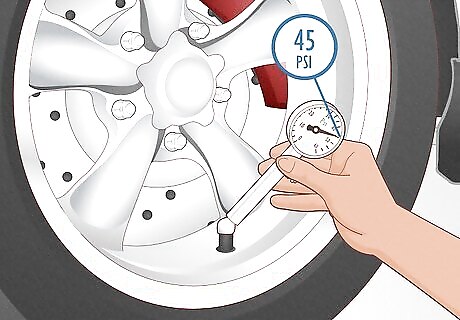
Use a tire pressure gauge to determine the tire's current PSI. Modern cars have automatic tire pressure gauges that trigger a low tire pressure light. The indicator looks like an exclamation point in the middle of an open-top, flat tire. To check the air pressure, remove the cap from the air valve on the tire. Grab a tire pressure gauge, turn it on, and press the gauge against the open valve stem for a second or two. The PSI will appear on the gauge. For example, if your vehicle's recommended PSI is 33, but the gauge reads 45, you'll need to release air. If it reads lower than 33, add air using a portable air compressor. It's normal to hear a hiss of air as you press the tire pressure gauge against the stem. In higher-end vehicles, the car may automatically calculate each tire's pressure on the dashboard.
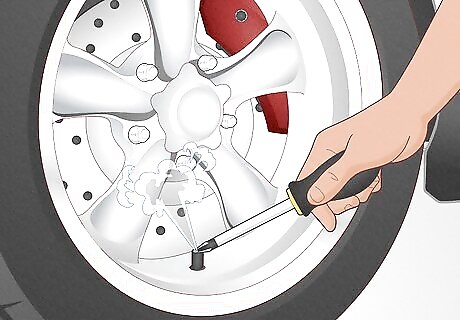
Release air in short bursts with a gauge or screwdriver. If your tire pressure gauge has a sharp end, press down on the metal pin on the open valve stem. Listen for a hissing sound to know the air is released. It's best to let the air trickle out slowly or in short bursts so you don't under inflate the tire. You can also use needle-nose pliers or something similar to remove air from the tire.
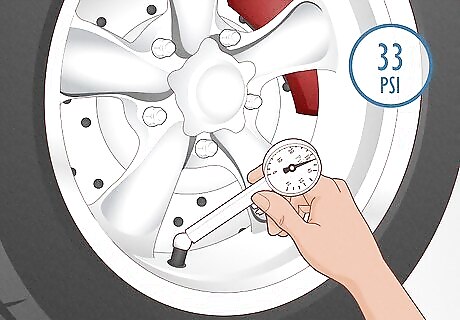
Check periodically to ensure the PSI reaches the recommended level. After each short burst of air release, reapply the tire pressure gauge to read the current PSI level. Continue releasing air until you reach the recommended tire pressure.

Cover the open valve stem with the tire caps. Once you've reached the recommended air pressure, take the tire caps you removed earlier and screw them back on. This time you'll have to screw clockwise to seal the valve.
Signs Your Tires Are Overinflated
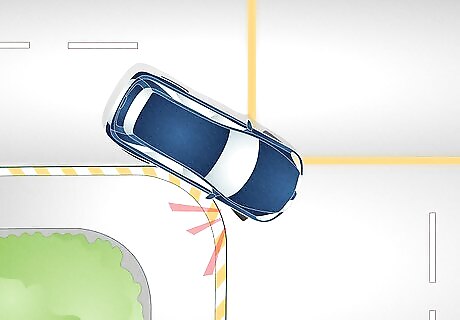
Less traction When your tires are overinflated, they become more rounded. While this may not seem bad, a distorted tire can impact the tire's traction on the road. Inefficient traction can make controlling your vehicle more challenging, especially when taking sharp turns or driving in inclement weather.
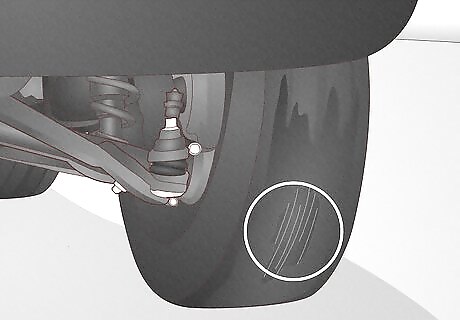
Worn treads The minimum recommended tire tread depth is 4/32 of an inch. If your tires are less than that, it can lead to safety hazards for you and others on the road. Similarly to driving with less traction, bald or low-treaded tires are prone to hydroplaning when it rains and is more susceptible to blowouts. A tire is classified as bald when its grooves measure 2/32 of an inch. To check your tire tread, use a penny or quarter. Insert the coin into your tread groove. For a penny, if you can see all of Abraham Lincoln's head, your tire depth is less than 2/32 of an inch. Your tires are still good if the tread touches Washington's head for a quarter.
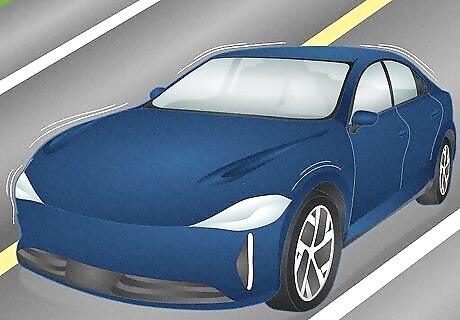
Bumpier rides If you notice the sounds of the road or experience more bumps on your commute than normal, this is a key sign of overinflated tires. When your tires have too much air, they become stiff and inflexible, exposing them to potential damages, like punctures and blowouts.

Decreased fuel efficiency Despite popular belief, overinflated tires don't cut costs on fuel. Due to the lack of traction, your vehicle has to work harder to perform at its peak performance. Therefore, requiring more fuel to get you from Point A to Point B.
Prevention Tips

Check your tire pressure once a month. Tires can lose pressure from daily use, driving distance, temperature fluctuations, and extra weight. It's best to use the tire pressure gauge at least once a month to ensure your tires are within the recommended PSI levels. You can also check when the temperature drops by 10 degrees or twice a month during winter.
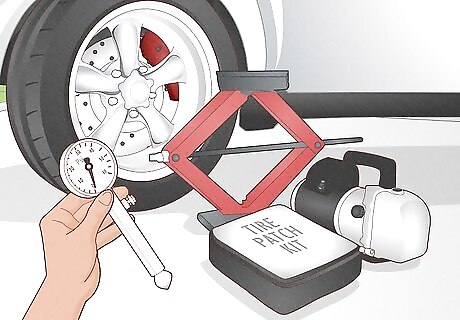
Invest in high-quality tire equipment. Be prepared for an emergency and build an emergency repair kit for your vehicle. Keep a tire compressor, pressure gauge, extra valve caps, and a tire-patch kit on hand if you need to fix a flat tire. Consider storing a portable jack alongside your extra tire if you have space. Always check the tire pressure on your spare tire, too.
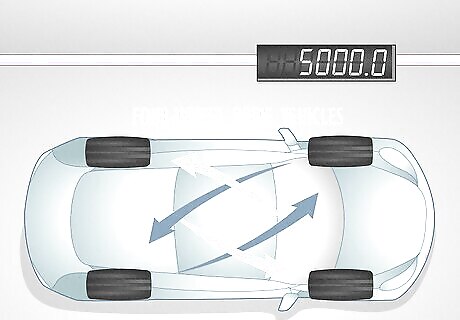
Rotate your tires every 5,000 to 7,000 miles. Rotating your tires can ensure even wear and tear on your tires while also expanding their lifespan. To rotate your tires for all-wheel or four-wheel drive vehicles, swap the front left with the back right tire, and the front right with the back left tire. You'll need a lug wrench to loosen the bolts and a jack to raise the car off the ground. Bring the front tires to the back on the same sides for front-wheel drive vehicles. Move the read tires to the front on opposite sides. For rear-wheel drive vehicles, move the rear tires to the front but keep them on the same side. Put the front wheels in the back on opposite sides.



















Comments
0 comment